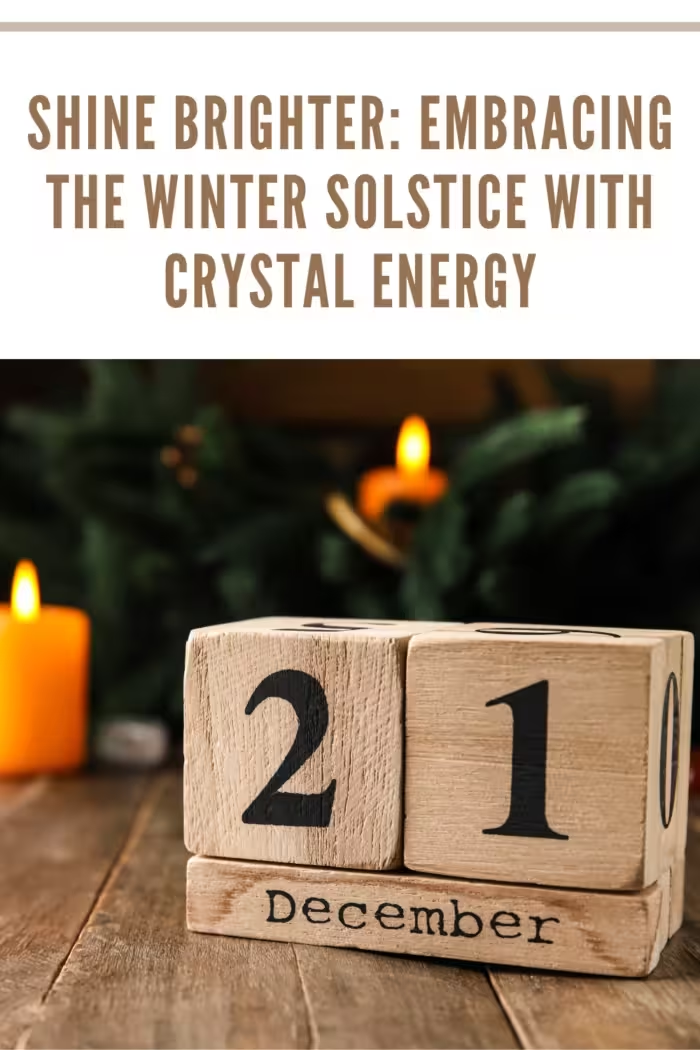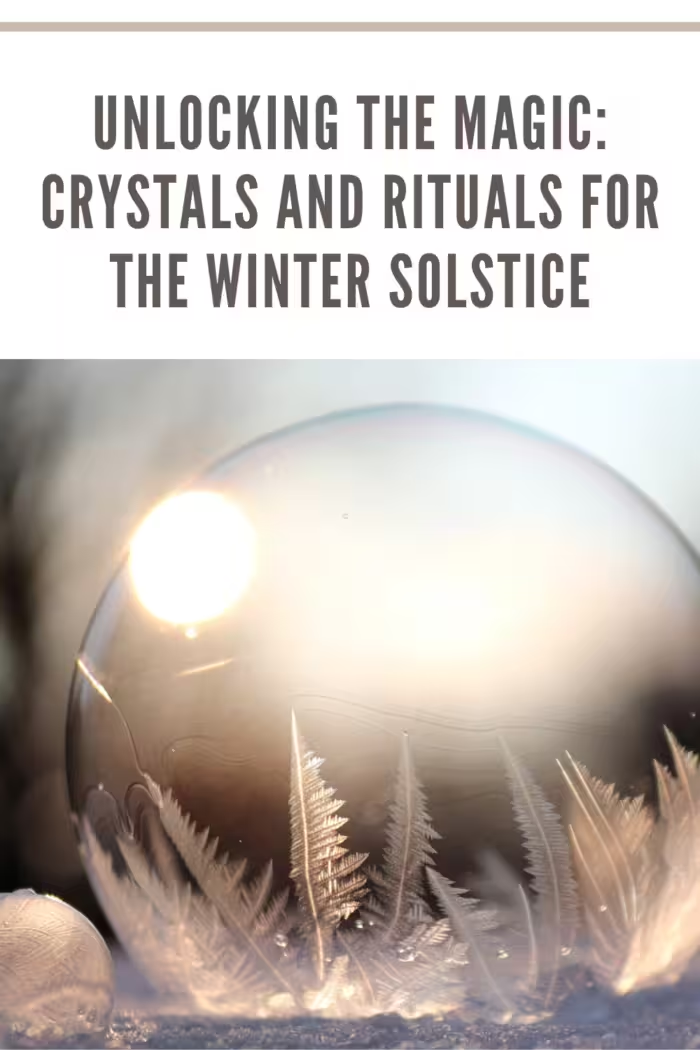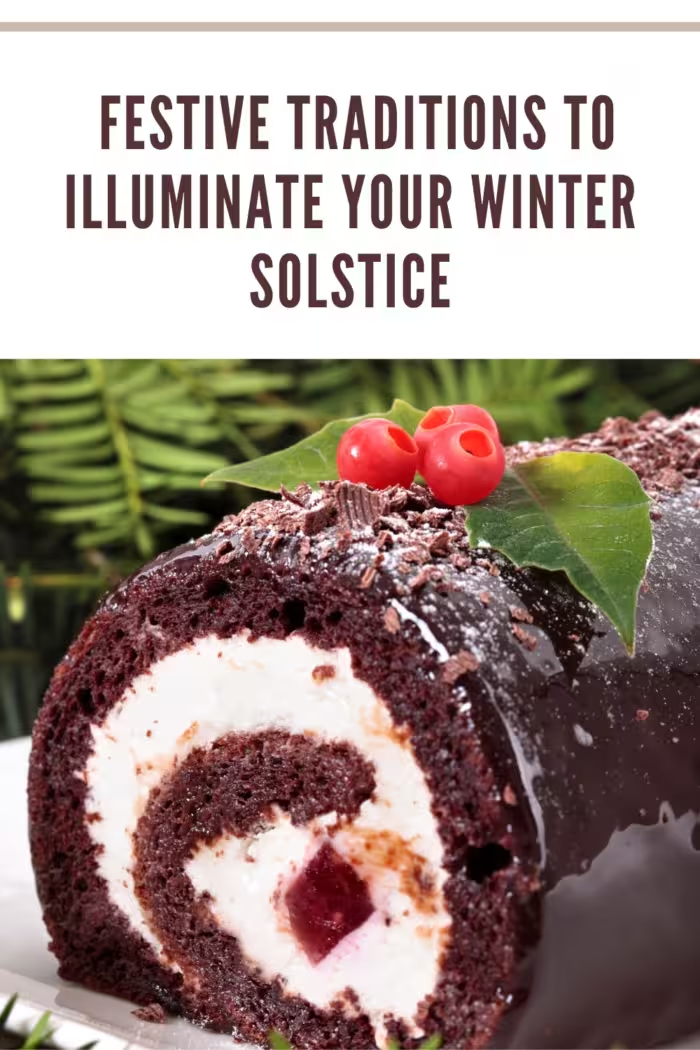The Winter Solstice, also known as the December Solstice, is an astronomical event that marks the shortest day and longest night of the year in the Northern Hemisphere. It occurs around December 21st or 22nd each year when the North Pole is tilted farthest from the sun. In the Southern Hemisphere, this date corresponds to the Summer Solstice, with the longest day and shortest night.
Cultures around the world have celebrated the Winter Solstice for centuries, often with festivals, rituals, and symbolic ceremonies. The return of longer days following the solstice is often seen as a metaphor for the triumph of light over darkness.
Crystals are often associated with various metaphysical properties, and some people believe that certain crystals are particularly beneficial during specific times of the year or events like the Winter Solstice.

Unlocking the Magic: Crystals and Rituals for the Winter Solstice
While individual preferences and beliefs can vary, here are a few crystals that some people find resonant during the Winter Solstice:
- Clear Quartz: Known as a versatile and powerful crystal, clear quartz is believed to amplify energy and intentions. It is often associated with clarity, focus, and cleansing, making it suitable for setting intentions and welcoming positive energy during the solstice.
- Moonstone: Moonstone is associated with the energy of the moon and is believed to promote intuition, balance, and new beginnings. Its gentle, calming energy may be helpful during times of reflection and transition.
- Labradorite: This crystal is often linked to mystical and transformative energies. Labradorite is believed to enhance spiritual connections, intuition, and self-discovery. It can be used for introspection and embracing the unseen aspects of life.
- Garnet: Garnet is associated with grounding energy and is believed to provide strength and courage. It may be used to help release old patterns and invite positive change, making it a potential ally during times of transition.
- Amethyst: Known for its calming and protective properties, amethyst is often associated with spiritual growth and balance. It may be used to enhance meditation, intuition, and a sense of tranquility.

Embracing the Longest Night: Festive Traditions to Illuminate Your Winter Solstice
Winter Solstice traditions vary across cultures, but many share common themes of celebrating the return of light, embracing the changing seasons, and fostering a sense of community.
Here are some traditions associated with the Winter Solstice:
- Yule Log: Burning a Yule log is a tradition in various cultures. The Yule log, often a large piece of wood, is burned in a fireplace or outdoors to symbolize the return of the sun’s light and warmth.
- Feasting and Celebrations: Many cultures celebrate the Winter Solstice with feasts and gatherings. It’s a time to share food, drink, and festivities with friends and family.
- Candle Lighting: Lighting candles or a series of candles is a common practice, symbolizing the triumph of light over darkness. Some people light a candle each night leading up to the solstice.
- Solstice Night Walks: Taking a nighttime walk or hike on the Winter Solstice is a way to connect with nature and experience the stillness of the longest night.
- Decorating with Evergreens: Evergreen plants, such as holly, ivy, and pine, are often used for decorations (Britannica). Their greenery symbolizes life and rebirth during the dormant winter months.
- Winter Solstice Altars: Creating a Winter Solstice altar with symbolic items, such as crystals, candles, and seasonal plants, is a way to focus on intentions and reflect on the changing seasons.
- Drumming and Music: Some cultures use drumming and music to mark the Winter Solstice. The rhythmic beats are believed to awaken the Earth and encourage the return of the sun.
- Gift Giving: Gift exchanges during the Winter Solstice are a way to share warmth and generosity with loved ones. Handmade or symbolic gifts often carry special significance.
- Reflection and Meditation: The Winter Solstice is a natural time for reflection, introspection, and setting intentions for the coming year. Meditation and mindfulness practices are common during this time.
- Community Events: Many communities organize special events or festivals to celebrate the Winter Solstice. These can include parades, bonfires, and performances that bring people together.
- Sunrise Watching: Welcoming the sunrise on the day of the Winter Solstice is a powerful tradition. Observing the first light of the new solar year is symbolic of hope and renewal.

Remember that these traditions can be adapted and personalized to suit individual preferences and beliefs. The Winter Solstice is a versatile and inclusive celebration, and people often create their own rituals to mark this special time of year.
Remember that crystals are often based on personal beliefs and experiences, and there is no scientific evidence to support their metaphysical properties. If you choose to use crystals, it’s essential to approach them with an open mind and enjoy them for their aesthetic beauty and potential symbolic value.
